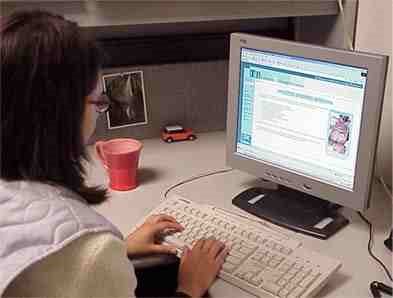
In November 2006, the 39-year-old mother of three was diagnosed with ocular melanoma that had spread to her liver.
"My oncologist flat out told me that there is no treatment," remembers Stettler, who emigrated to the U.S. from Poland in 1994. "He said for me to go home and enjoy with my family whatever time I have left, which could be up to six months."
Stettler's husband, Marek, couldn't fathom the oncologist's terminal diagnosis and instead turned to the Internet. Hours of research led him to Dr. Charles Nutting, an interventional radiologist at the Swedish Medical Center in Denver. Dr. Nutting agreed to treat Stettler, also a Denver resident, with a cutting edge therapy that injects the tumors with radioactive beads to gradually shrink them. A year-and-a-half later her tumors began to grow again.
In Depth: How to Get the Best Medical Advice Online
That's when Marek returned to the Internet and discovered that the National Institutes of Health was in the midst of a clinical trial to treat cancer patients with a radical new therapy that uses six times the amount of chemotherapy while not allowing it to enter the body's bloodstream. Dr. Nutting hadn't yet heard of the trial, but agreed to help Stettler participate. Four treatments this year have shrunk the tumors by 75%.
Safe Searching
Though Stettler's case is an extreme example, it is a reminder that online medical resources and advice can be a powerful tool if used wisely. The most reliable and accurate Web sites, blogs and list-serves can lead users to information about prevention, diagnosis, treatment and experts, sometimes helping them to improve their quality of life dramatically.

There are countless medical resources online. Dr. Harlan Weinberg, author of Best Health Resources on the Web, started with a list of 20,000 Web sites and took three-and-a-half years to whittle it down to 1,000 reliable and accurate sites. In addition to reference sites, there are also list-serves and blogs which can connect patients with their peers and other experts. With the abundance of information, Dr. Harland urges users to be skeptical and not believe everything they read.
How to Surf the Web for Medical Advice
You could start out by typing a key word into a search engine, but don't just click on the top results. A Google search for diabetes, for example, offers Web sites for health care media publishing companies in its top three results. But perhaps more reliable is a site run by the National Institutes of Health, which contains basic research on the disease in addition to information about ongoing clinical trials and alternative therapies.
Cyberchondria
Don't let paranoia dominate your search habits when looking for medical information online. A recent Microsoft study of Internet use and medical research found that of more than 11,100 search sessions, 5.3% led to a "query escalation." In such cases, the subject began associating a common symptom with a serious medical condition, like starting with "headache" then proceeding to "headache tumor" and "brain tumor treatment." Caffeine withdrawal is far more likely the cause.
Involve Your Physician
Internet savvy patients can find experts and remedies that change the course of their treatment, but that the newfound knowledge should be parsed by a trained professional. "It's a tool," says Dr. Harlan Weinberg, head of the critical care department at Northern Westchester Hospital in Mt. Kisco, N.Y, "but you still need to have someone doing the critical medical thinking."
Delegate Research Responsibilities
When Jola Stettler, a 39-year-old mother of three, was diagnosed with ocular melanoma that had spread to her liver, she relied on her husband to use the Internet as a research tool. "I was trying to occupy my mind with something else," she says. So her husband began investigating treatments for the disease and eventually found a radiologist willing to treat her as well as a clinical trial being run by the National Institutes of Health.
Remember that You're Unique
When discussing health issues and concerns through a list-serve, blog or other medium, remember that your case is unique. Despite shared symptoms and experiences, try to think about how your care and treatment might differ from that of online contacts. There are basic rules about treating certain ailments, but gender, age and lifestyle can make a huge difference when it comes to finding the right approach.

